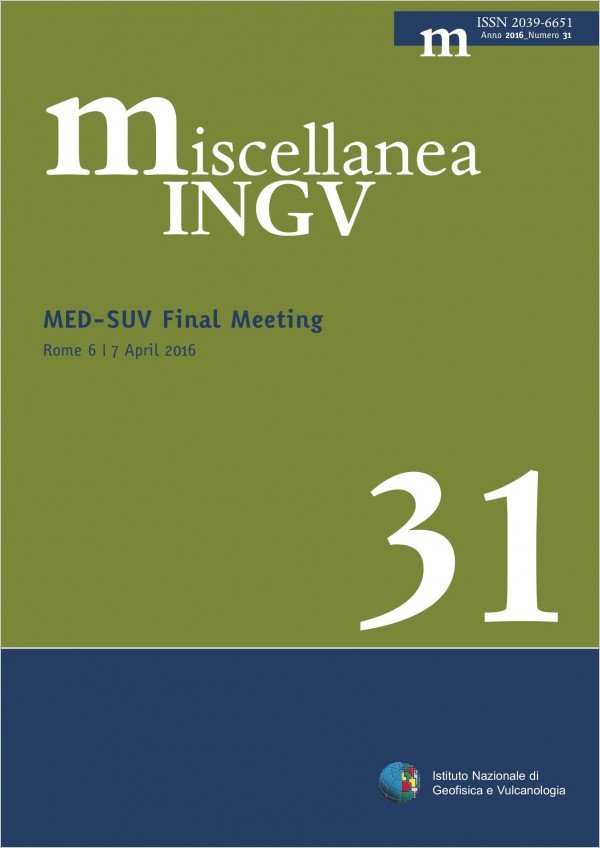MED-SUV Final Meeting. Rome 6 | 7 April 2016
Main Article Content
Abstract
Next 31 May 2016 the MED-SUV project will end. Surprisingly time has run it seems yesterday when we met for the first year meeting in Nicolosi. Throughout the project life, the Consortium has carried out activities relating to the project management, scientific/technological development, and dissemination. The management has included many different aspects among which the organization of the start the project and all the consortium activity, in terms of definition of the Governance Bodies, work package meetings and intra-work package meetings, management of the project’s products, and provision of the guidelines for the scientific and financial reporting.
Management also aimed at finding synergies with EC and international initiatives, such as geohazard activities of GEO-GEOSS, EPOS-PP/EPOS-IP and the other two FP7 Supersite projects - MARsite and FUTUREVOLC - to build the future research infrastructures for Earth Science in Europe. WP1 has made great efforts to put together principles and rules to define, classify, and protect your data and products, in order to promote data sharing and the circulation of the information among the project partners, and outside the Consortium.
The scientific and technological activities included field campaigns for data collection at Mt. Etna, Campi Flegrei and Vesuvius and instrumentation testing, laboratory and field experiments, software, prototypes and instrumental development, design and implementation of the MED-SUV e-infrastructure, and the pilot phases carrying out. All these activities have represented the core of the project as they have involved the most part of the MED-SUV participants and have also promoted scientific collaborations with scientists external to the project and with other EU projects.
The dissemination activities have consisted in participation at international and local scientific conferences and initiatives, publication of scientific articles in peer-reviewed international journals, interviews contributing to journal articles, videos and TV programs, use of social networks for project promotion, and distribution of project material. Moreover, some educational activities were carried out in selected schools of countries involved in the project (Spain and Italy), in order to raise pupils’ understanding of what a volcano is and what kind of hazards are associated with its activity.
Management also aimed at finding synergies with EC and international initiatives, such as geohazard activities of GEO-GEOSS, EPOS-PP/EPOS-IP and the other two FP7 Supersite projects - MARsite and FUTUREVOLC - to build the future research infrastructures for Earth Science in Europe. WP1 has made great efforts to put together principles and rules to define, classify, and protect your data and products, in order to promote data sharing and the circulation of the information among the project partners, and outside the Consortium.
The scientific and technological activities included field campaigns for data collection at Mt. Etna, Campi Flegrei and Vesuvius and instrumentation testing, laboratory and field experiments, software, prototypes and instrumental development, design and implementation of the MED-SUV e-infrastructure, and the pilot phases carrying out. All these activities have represented the core of the project as they have involved the most part of the MED-SUV participants and have also promoted scientific collaborations with scientists external to the project and with other EU projects.
The dissemination activities have consisted in participation at international and local scientific conferences and initiatives, publication of scientific articles in peer-reviewed international journals, interviews contributing to journal articles, videos and TV programs, use of social networks for project promotion, and distribution of project material. Moreover, some educational activities were carried out in selected schools of countries involved in the project (Spain and Italy), in order to raise pupils’ understanding of what a volcano is and what kind of hazards are associated with its activity.
Article Details
Section
Article

This work is licensed under a Creative Commons Attribution 4.0 International License.

